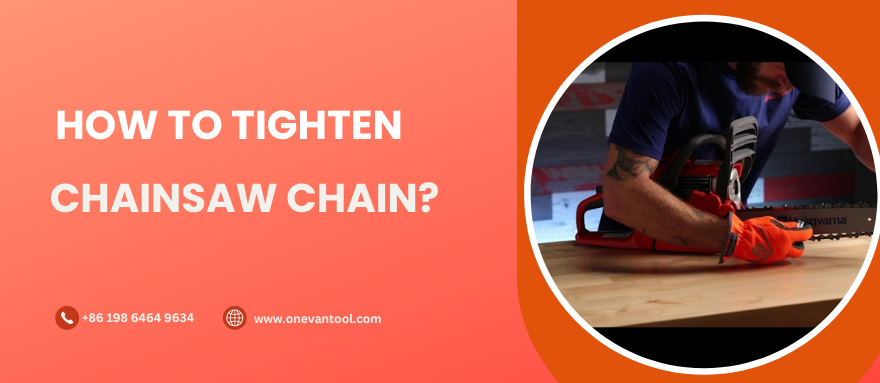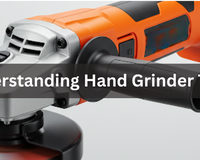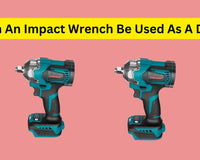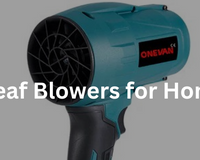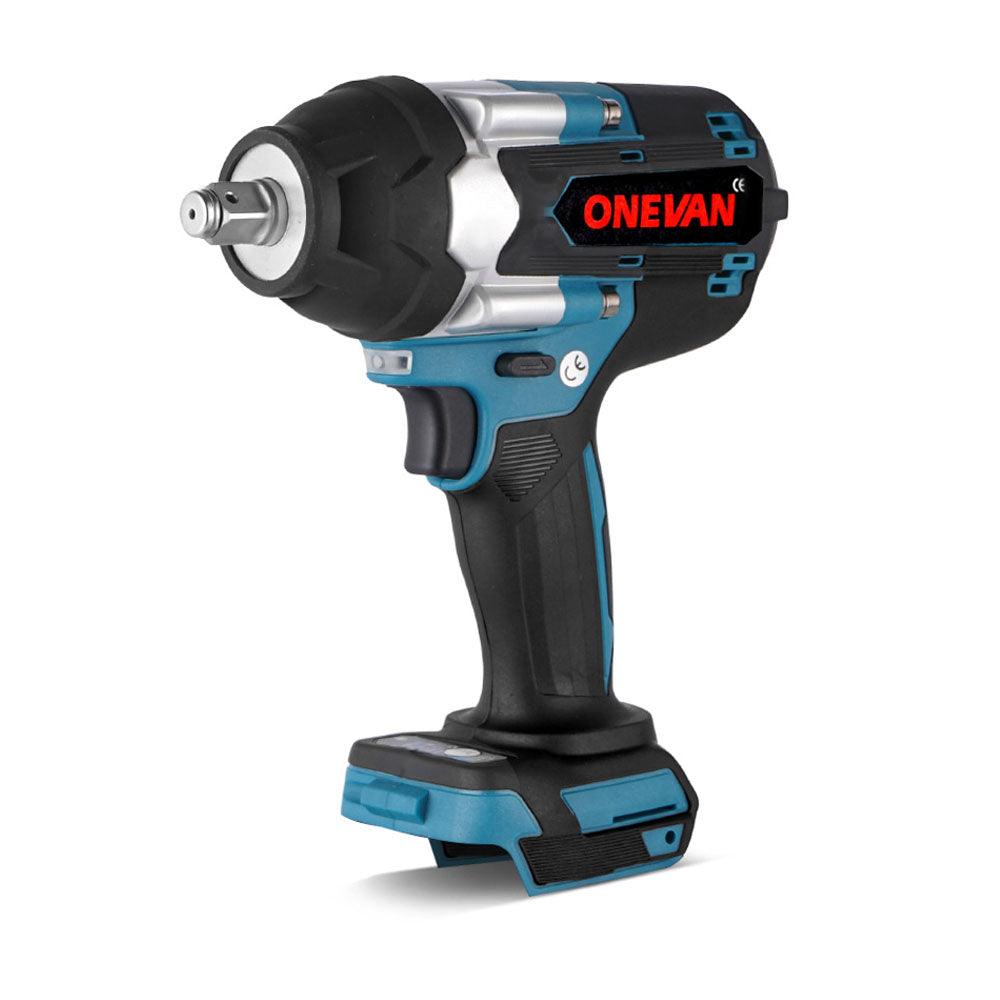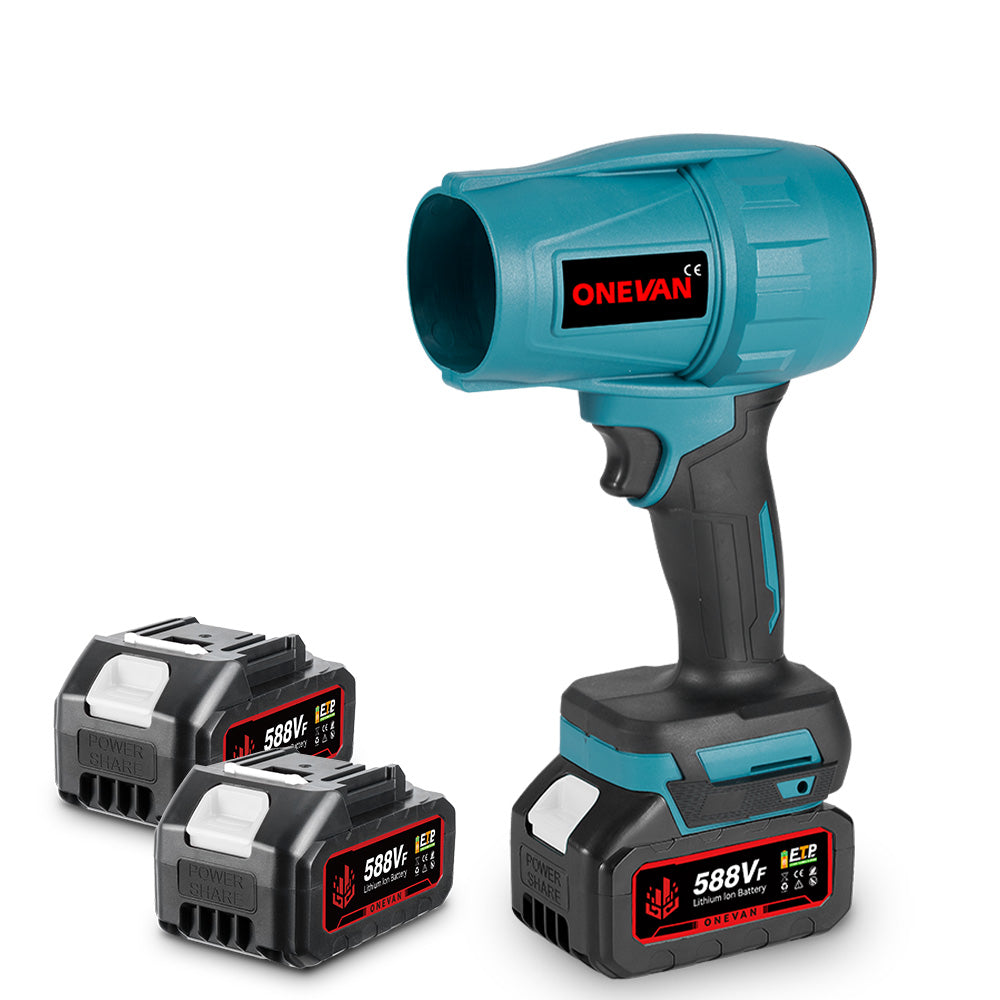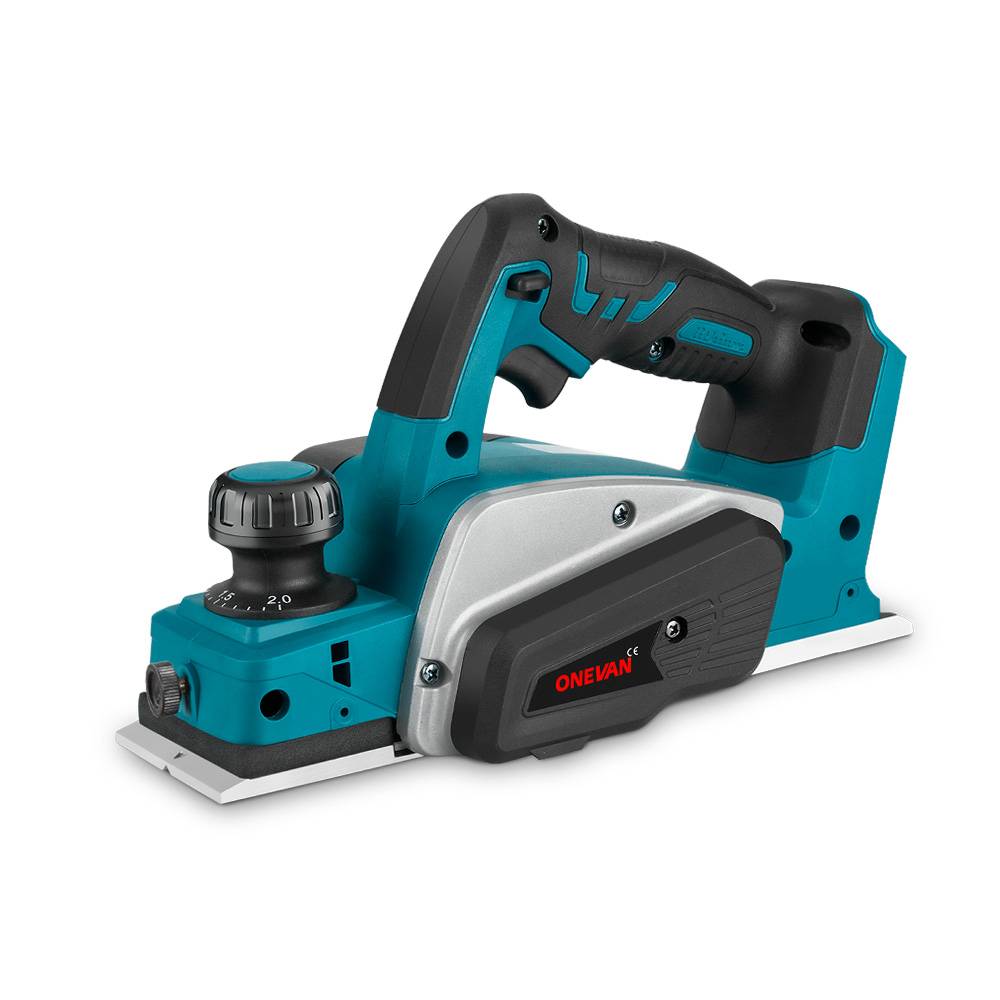A loose chain is like that dull knife - it slips and bounces around, making clean cuts a distant dream. Even worse, it greatly increases the risk of kickback, that scary jolt where the chainsaw bucks up like a bucking bronco. Studies show a loose chain can jump your chances of kickback by a scary 30%!
- The chain
- The bar,
- And engine.
This can reduce the life of your chainsaw. Subsequently, nobody wants to replace a perfectly good tool before its time. So in this article, you are going to read everything you need to learn on how to tighten a chainsaw.
1. When To Tighten Your Saw Chain?
Maintaining proper chain tension is crucial for safety and performance. Here are some technical indicators to watch for:
Sagging Chain
Visually inspect the underside of the chain while holding the bar tip up. A properly tensioned chain will have minimal slack (around 3-6 mm / 1/8" to 1/4") between the bottom of the drive links and the bar groove. Excessive slack exceeding this range indicates a loose chain that needs tightening.
Slippage During Operation
With the engine off and using a gloved hand, gently pull the chain away from the bar on the underside. A properly tensioned chain will resist this pull with a slight upward force. If the chain pulls away easily, exceeding 6 mm / 1/4", the tension is too loose and needs adjustment.
Ineffective Cutting
Pay attention to cutting performance. A loose chain can exhibit several signs:
- Increased cutting effort: The saw may require more pushing or forcing to achieve cuts, even with proper cutting techniques.
- Uneven cuts: The chain may wander or deflect during cutting, resulting in ragged or uneven cuts.
- Reduced cutting speed: The chain may bind or hesitate during cutting, slowing down the overall cutting process.
New chains are prone to slight stretching during the initial break-in period (typically the first few hours of use). This stretching can cause the chain tension to loosen. It's recommended to check and adjust the tension after refueling or recharging, especially during this break-in phase, to maintain optimal performance and prevent premature wear.
2. The Danger of Running a Chainsaw with The Wrong Tension

Let's look into the technical details and potential risks:
Increased Wear and Damage
Loose Chain: When a chain is loose, it has excessive play within the bar groove. This increased movement creates friction between the chain drive links, the bar rails, and the sprocket nose. This friction accelerates wear on these components:
Chain: The wear on the drive links can lead to premature stretching and increased risk of breakage.
Bar: The rubbing against the loose chain can wear down the bar rails, reducing its cutting efficiency and requiring earlier replacement.
Sprocket: The loose chain can cause uneven wear on the sprocket teeth. This damages its ability to properly engage the chain.
Overly Tight Chain
Excessive tension creates a binding effect between the chain and the bar groove. This binding not only increases wear but also puts strain on other components:
Chain: The tight fit can cause the chain links to bind and wear unevenly, accelerating stretching and breakage.
Bar: The constant pressure from the tight chain can deform the bar rails, affecting chain fit and cutting performance.
Engine & Clutch: The strain of a tight chain can put excessive load on the engine and clutch, potentially leading to overheating and premature wear.
Safety Risks
Loose Chain: The most significant safety concern with a loose chain is the increased risk of kickback. Kickback happen when the tip of the chainsaw bars snags or bounces on the wood. This causes the saw to buck violently upwards. A loose chain is vulnerable to snagging and bouncing. It creates a higher risk of kickback.
Overly Tight Chain: It is less common. An overly tight chain can also pose safety risks. A binding chain can cause the chainsaw to:
Stall unexpectedly: The tight chain can bind in the bar groove, causing the engine to stall abruptly and potentially leading to loss of control of the saw.
Jerk uncontrollably: If the binding releases suddenly, the chain can jerk the saw forward unexpectedly, again increasing the risk of losing control.
Reduced Cutting Efficiency
Loose Chain: A loose chain vibrates and bounces excessively during cutting. This vibration:
- Reduces the chain's capability to cut wood fibers, resulting in slower cutting speeds.
- Increases operator fatigue due to extra force.
Overly Tight Chain: A tight chain creates excessive drag within the bar groove. This drag:
- Hinders the chain's smooth rotation, reducing cutting speed and overall efficiency.
- Creates additional strain on the engine, potentially leading to power loss and further impacting cutting performance.
3. Step by Step: How to Tighten a Chainsaw Chain
A proper tensioned chainsaw's chain accelerates its performance significantly. Let’s read how to get perfect tension:
Tools Required for Chain Adjustment
The specific tools you'll need depend on your chainsaw type:
- Gas-powered Chainsaws:
- Combination wrench (size varies depending on model)
- Screwdriver (flathead or socket depending on model)
- Work gloves
- Safety glasses
- Corded Electric Chainsaws:
- Socket wrench set (usually included in the chainsaw manual)
- Work gloves
- Safety glasses
- Cordless Chainsaws:
- Onboard adjustment knob (some models) or socket wrench set (depending on model)
- Work gloves
- Safety glasses
Note: Always consult your chainsaw's user manual to read safety instructions.
Step 1: Power Off the Chainsaw and Wear Safety Gear
- Turn off the engine and unplug the chainsaw (if electric).
- Engage the chain brake.
- Wait for all moving parts to stop completely.
- Wear safety gear: work gloves, safety glasses, and hearing protection.
Step 2: Loosen the Bar Nuts
The bar nuts hold the chainsaw guide bar in place. It also allows tension adjustment. Locate the nuts on either side of the bar where it connects to the chainsaw body.
- Gas-powered Chainsaws: Use the combination wrench (about 1/2 turn each) .
- Corded Electric Chainsaws: Use the appropriate socket from the wrench set . It is to loosen both bar nuts slightly (about 1/2 turn each) in a counter-clockwise direction.
- Cordless Chainsaw: If your model has an onboard adjustment knob, simply turn it counter-clockwise. This step will loose the tension. Otherwise, use the socket wrench set to loosen the bar nuts (depending on the model).
Important: Don't completely remove the bar nuts at this stage. You only need enough slack to adjust the chain tension.
Step 3: Adjust the Tensioning Screw
Check tensioning screw near the bar mounting point. It's usually a screw accessible from the side of the chainsaw body. Tensioning screw has flathead or socket head depending on the model.
- Gas-powered Chainsaws: Use the screwdriver to turn the tensioning screw clockwise. As you tighten, lift the tip of the guide bar slightly.
- Corded Electric Chainsaws: Use the appropriate socket wrench to turn the tensioning screw clockwise in small increments. Follow the same process of lifting the bar tip to check for tension.
- Cordless Chainsaws: Some models might have a dedicated tensioning knob that you can turn clockwise to tighten. Otherwise, use the socket wrench set to adjust the screw as described above.
Crucial Tip: Tighten the screw in small increments. Also, check the tension after each turn. The goal is to achieve minimal slack in the chain.
Step 4: Checking Chain Tension by Pulling
Here's how to determine the proper chain tension:
- With the engine off and the bar tip held slightly up, gently pull the chain away from the underside of the bar with gloved fingers.
- The chain should have a slight slack (around 3-6 mm / 1/8" to 1/4"). You should feel a slight resistance when pulling the chain.
- If the chain pulls away easily exceeding 6 mm / 1/4", it's too loose and needs further tightening with the screw.
- Conversely, if the chain feels very tight and barely moves, it's over-tensioned and needs loosening by turning the screw counter-clockwise slightly.
Step 5: Retighten the Bar Nuts
Once you've achieved the proper chain tension:
- Hold the bar tip slightly up in position.
- Retighten the bar nuts evenly and firmly with the wrench or socket set in a clockwise direction.
- Ensure the bar sits flat against the chainsaw body and can move freely back and forth for proper tensioning.
Step 6: Post-Adjustment Chain Lubrication
Chainsaw chains rely on proper lubrication to reduce friction and wear. After adjusting the tension:
- Check the chain oil level in the reservoir.
- Refill the oil reservoir following the manufacturer's recommendations.
- Now, run the chainsaw for a few seconds. It will allow the oil to circulate around the chain and bar.
4. Testing Chain Tension Correctly
Check your chainsaw chain tension isn't just about following a checklist; it's about developing a feel for what's right. We have given two methods to ensure your chain is neither too loose nor too tight:
The Pull Test
This classic method is a great way to gauge chain tension with your hand. Remember, safety first! Make sure the engine is off, the chain brake is engaged, and you're wearing work gloves. Here's what to do:
- Lift the tip of the chainsaw bar slightly. This helps isolate the chain tension from the bar weight.
- Using your gloved fingers, gently pull the chain away from the underside of the bar.
- Find the sweet spot. The chain should have minimal slack, somewhere around 3-6 millimeters (roughly 1/8" to 1/4"). You should feel a slight resistance when you pull, but not so much that the chain feels stiff.
- Too loose? Too tight? If the chain pulls away easily exceeding 6 mm, it's too loose and needs tightening. Conversely, if the chain barely moves and feels very tight, it needs loosening.
Remember: It's all about balance. You want the chain to move freely around the bar groove, but not so loose that it sags or flops around.
The Operational Test
The pull test is a reliable method; experienced chainsaw users can also rely on the sound. They feel of the saw during operation to assess chain tension. What points should you consider?
- Start the chainsaw. A well-tensioned chain has a smooth, consistent hum as it rotates around the bar.
- Listen for warning signs. If the chain is too loose, you might hear a slapping or rattling sound. This indicates excessive play and potential for kickback.
- Feel for binding. If the chain is too tight, the engine might sound bogged down or labor under increased load. Additionally, the saw might vibrate excessively.
5. Common Mistakes to Avoid When Tightening a Chainsaw Chain
To guarantee safety, it is important to maintain proper chain tension. Below, you will find some of the mistakes while tightening your chains.
Over-Tightening the Chain
The Problem: Cranking down on the tension screw like you're tightening a lug nut is a straightforward trouble. An overly tight chain can significantly impair chainsaw performance and lead to mechanical damage.
Technical Impact:
- Increased Friction: A tight chain creates excessive drag within the bar groove. This friction hinders the chain's smooth rotation, reducing cutting speed and efficiency. Additionally, the extra strain on the engine can lead to power loss and premature wear.
- Binding and Jerking: The tight fit can cause the chain links to bind in the bar groove. This binding can cause the chainsaw to:
- Stall unexpectedly: The engine may stall abruptly as it struggles to overcome the resistance of the tight chain. This can lead to loss of control of the saw.
- Jerk uncontrollably: If the binding releases suddenly, the chain can jerk the saw forward unexpectedly, again increasing the risk of losing control.
- Premature Wear and Tear: The constant pressure from the tight chain can deform the bar rails, affecting chain fit and cutting performance. Additionally, the strain on the chain itself can lead to uneven wear and premature breakage.
The Fix: Remember, a tight chain isn't a strong chain. Aim for a slight resistance when pulling the chain away from the bar, not a complete lockdown.
Over-Loosening the Chain
The Problem: A loose chain is ineffective and potentially dangerous.
Technical Impact:
- Increased Risk of Kickback: The biggest safety concern with a loose chain is the increased risk of kickback. Kickback causes the saw to buck violently upwards. A loose chain is more prone to snagging. It will create a higher risk of kickback and potentially causing serious injury.
- Reduced Cutting Efficiency: A loose chain vibrates and bounces excessively during cutting. This vibration:
- Reduces the chain's ability to efficiently engage with wood fibers, resulting in slower cutting speeds.
- Increases operator fatigue due to the need to exert more force to maintain control of the saw.
- Increased Wear and Tear: A loose chain creates excessive play within the bar groove. This increased movement creates friction between the chain drive links, the bar rails, and the sprocket nose. This friction accelerates wear on these components:
- Chain: The wear on the drive links can lead to premature stretching and increased risk of breakage.
- Bar: The rubbing against the loose chain can wear down the bar rails, reducing its cutting efficiency and requiring earlier replacement.
- Sprocket: The loose chain can cause uneven wear on the sprocket teeth. This negatively impacts its ability to properly engage the chain. The slippage chances become higher.
The Fix: Don't let your chain become loose cannon. Aim for that sweet spot of minimal slack with a slight resistance when pulling the chain.
Neglecting Regular Checks
The Problem: For example, you check your car's tire pressure, it's crucial to regularly observe your chainsaw chain tension. Don't wait for problems to arise before taking action.
The Fix: Develop a routine for checking your chain tension, especially after refueling or extended use. Aim for a quick inspection before each use to ensure optimal performance and safety.
Ignoring Manufacturer's Instructions
Every chainsaw is different. Manufacturers provide recommendations for chain tension in user manual. Don't rely on assumptions.
However, after reading this article, you will have a better understanding of how to correctly adjust your chainsaw chain tension according to your specific power tool and cutting conditions. With some practice and these tips you can be an expert operator to use chainsaw.
6. Conclusion
An optimum chainsaw chain tension is essential for safe and effective cutting. Both loose and over tight chainsaw chain can lead to safety hazard and premature wear. After following above mentioned procedure, you can improve your skills to deal with the ideal chain tension.
7. FAQs
1. How often should I check the tension of my chainsaw chain?
It's recommended to check your chainsaw chain tension regularly, such as:
- A quick inspection gives you safe operation.
- New chains stretch slightly during the break-in period.
- The chain can loosen over time due to wear and tear.
2. Can I tighten the chainsaw chain without incorporating any special tools?
Some cordless chainsaws have an onboard adjustment knob. This doesn’t require any tools. However, most gas-powered and corded electric chainsaws require specific tools for proper adjustment. These are:
- Combination wrench
- Socket wrench set
- Screwdriver
3. What are the signs of chainsaw chain is too tight?
- The chain has a minimal slack (3-6 mm).
- A tight chain causes a slapping sound.
- The saw vibrates noticeably during operation.
4. Is it safe to use a chainsaw with a loose chain?
No, using a chainsaw with a loose chain is dangerous. It increases the following risks:
- Kickback: A loose chain can slip or bounce on wood.
- Reduced cutting efficiency: A loose chain vibrates and cuts slower
- Wear and tear: A loose chain creates friction. It will accelerate wear on the chain, bar, and sprocket.
5. What should I do if my chainsaw chain slips?
A chain slipping during operation means a loose chain. You should stop the engine immediately and tighten the chain.
6. How do I know if I have a lubricated chainsaw chain?
- Check visually: Check the oil level in the chainsaw's reservoir.
- Touch test: During operation, feel the bar occasionally. If it feels hot, it is the sign of insufficient lubrication.
7. Can I use any type of oil in my chainsaw chain?
No, it is not recommended to use regular motor oil t lubricate chainsaw chain. You should always use dedicated chainsaw bar and chain oil to get optimum results.
8. What are the safety risks to over-tight the chainsaw chain?
- A tight chain strains the chain, bar, engine, and clutch. This leads to premature wear.
- The chain can bind in the bar groove. It causes the saw to stall.
- Avery tight chain can damage the sprocket or clutch.
9. How can I prevent my chainsaw chain from becoming too loose or too tight?
- Develop a routine for checking chain tension regularly.
- Use the correct tools for adjustment as recommended by the manufacturer.
- With regular practice, you'll develop a feel for the proper chain tension.
10. What to do if you don’t know the tension of your chainsaw chain?
If you have any doubt, it is advisable to contact with specific instructions and recommended chain tension levels. It is also important to seek professional chainsaw experts’ help.

